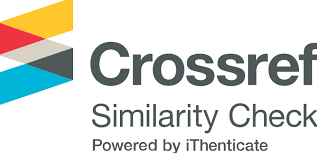Studies on the biological characteristics of Phellinus linteus in pure culture
Keywords:
Biological characteristics, mycelial growth, Phellinus linteus, pure cultureAbstract
Phellinus linteus is a well - known Oriental medicinal fungus with a
variety of biological activities, especially anti - tumor activities. This
material is now widely collected in nature and as such has become extinct.
Studies on the biological characteristics in pure culture are needed and the
results can be used for fruiting body cultivation. Studies on the biological
characteristics of Phellinus linteus in pure culture were conducted with
three kinds of nutrient media: PDA (potato dextrose agar), GYA (glucose
and yeast extract) and PGA (potato glucose agar), six temperature treatments (10oC, 15oC, 20oC, 25oC, 30oC and 35oC), six relative humidity (RH) conditions (75%, 80%, 85%, 90%, 95% and 100%) and the time of havesting of mycelial mass production. The results showed that the fungal growth increment reached highest values when mycelia were cultivated in PDA (2.92 mm/day) and PGA (2.71 mm/day). Good growth of mycelia were recorded when cultures were cultivated in temperatures from 20 to 30oC and the best growth increment was in 25oC, at a rate of 2.34mm/day. Mycelia grew well at a relative humidity over 90% and achieved an optimal rate of growth at 95% RH, growing 3.68 mm/day. The time required for cultivation from mass mycelial production was approximately 26 days, achieving a mass of 19.2gm fresh mycelia per 100ml of media.
References
1. Booth, C.P., 1971. Methods of mycrobioloogy, Tom 4, London New York.
2. Chen, W., He, F.Y. and Li, Y.Q., 2006. The apoptosis effect of hispolon from Phellinus linteus (Berkeley & Curtis) Teng on human epidermoid KB cells. Ethnopharmacol (105), pp. 280 - 285.
3. Han, M.W., Ko, K.S. and Chung, K.S., 1995. Korea Patent Open, pp. 95 - 7860.
4. Ikekawa, T., Nakanishi, M., Uehara, N., Chihara, G. and Fukuoka, F., 1968. Antitumor action of some Basidiomycetes, especially Phellinus linteus. Gann (59), pp. 155 - 157.
5. Itoh, S., Tanaka, R., Kato, S., Haruna, M., Kishimoto, K., Hirayama, H., Goda, Y., Mizukami, H. and Ogihara, Y., 2004. Identification of novel substituted fused aromatic compounds, meshimakobnol A and B, from natural Phellinus linteus fruit body. Tetrahedron Lett (45), pp. 5931 - 5933.
6. Kim, G.Y., Oh, W.K., Shin, B.C., Shin, Y.I., Park, Y.C., Ahn, S.C., Lee, J.D., Bae, Y.S., Kwak, J.Y. and Park, Y.M., 2004. Proteoglycan isolated from Phellinus linteus inhibits tumor growth through mechanisms leading to an activation of CD11c+CD8+ DC and type I helper T cell - dominant immune state. FEBS Lett 576: pp. 391 - 400.
7. Kojima, H., Tanigawa, N., Kariya, S., Komemushi, A., Shomura, Y., Sawada, S., Arai, E. and Yokota, Y., 2006. A case of spontaneous regression of hepatocellular carcinoma with multiple lung metastases. Radiat Med (24), pp. 139 - 142.
8. Miyazaki, T., Yadomae, T., Sugiura, M., Ito, H. and Fujii, K., 1974. Chemical structure of antitumor polysaccharide, coriolan, produced by Coriolus versicolor. Chem Pharm Bull (22), pp. 1739 - 1742.
9. Schwantes, O. und Saltter, P.W., 1971. Methode zur Messung der Wachstumsgeschwidigkeit von Pilzmycelien, Oberhess, Naturwiss, Zeischr 38, pp. 5 - 18.








